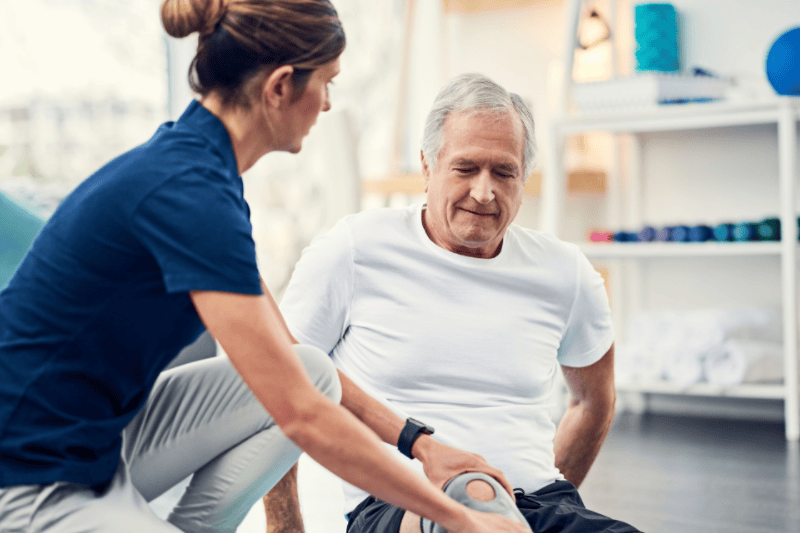Preventing Falls: Simple Steps to Stay Safe and Independent
August 7, 2025
Categories: Health and Wellness
Falls are one of the leading causes of injury among older adults. While they may seem like a minor mishap, falls can have serious consequences, including fractures, hospital stays, and reduced independence. The good news? Many falls are preventable.
As a valued member of Saint Alphonsus Health Plan, we want to help you stay active, healthy, and safe. Understanding what increases your risk of falling—and taking steps to reduce that risk—can help you maintain your independence and peace of mind.
Why falls happen
Falls often result from a combination of risk factors. The more risk factors you have, the higher your chance of falling.
Common contributors include:
- Balance and mobility Issues: Muscle weakness, joint stiffness, or poor coordination can make movement less stable.
- Medications: Some medications (especially those for blood pressure, sleep, or anxiety) can cause dizziness or drowsiness.
- Vision problems: Difficulty seeing clearly can make it harder to avoid obstacles.
- Home hazards: Clutter, loose rugs, poor lighting, and slippery floors increase the risk of tripping or slipping.
- Chronic health conditions: Conditions like diabetes, arthritis, and Parkinson’s disease can affect balance and movement.
- Previous falls: Having fallen before makes it more likely you’ll fall again.
Steps You Can Take to Prevent Falls
Fall prevention starts with awareness and action. Here are some simple yet effective strategies to reduce your risk:
1. Talk with your doctor
- Discuss any falls or balance issues.
- Review your medications regularly to avoid interactions and side effects.
- Schedule annual hearing and vision checks.
2. Stay active
- Exercise improves strength, balance, and flexibility.
- Try activities like walking, tai chi, or water aerobics.
- Ask if your plan includes access to fitness programs or physical therapy.
3. Fall-proof your home
- Remove tripping hazards like cords, loose rugs, and clutter.
- Non-slip mats in bath and kitchen.
- Install grab bars in the bathroom and handrails on stairs.
- Improve lighting, especially along walkways and stairs.
- Nightlights between bed and bath.
4. Wear the right footwear
- Shoes that are supportive, flat, and have non-slip soles.
- Avoid walking in socks or slippers on slippery floors.
5. Use assistive devices if needed
- Canes, walkers, and other devices can improve balance and mobility.
- Make sure properly fitted and used as directed.
We’re here to help
Your health plan offers resources to help you stay safe. These include:
- Plan-covered annual wellness visits
- Physical therapy
- Vision and hearing care benefits
- Our Case Management team can discuss ways to decrease your risk of falls at home and potentially link you with balance programs. They can also review what durable medical equipment (DME) may assist you and what would be covered vs. self-pay items.
If you have questions or would like help accessing any of these services, please contact Member Services at 800-240-3851, from 8 a.m. to 8 p.m., 7 days a week. Remember: Preventing a fall is easier than recovering from one. Small steps today can lead to a safer tomorrow. Schedule a visit to talk with your primary care doctor today!
Stay strong. Stay steady. Stay safe.
